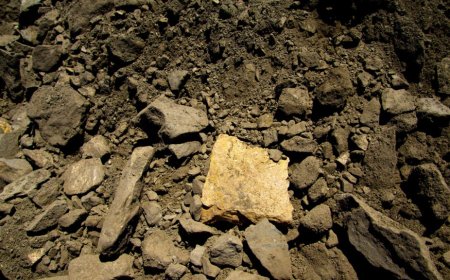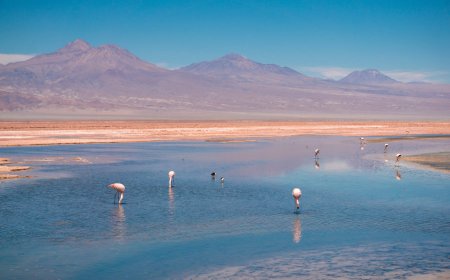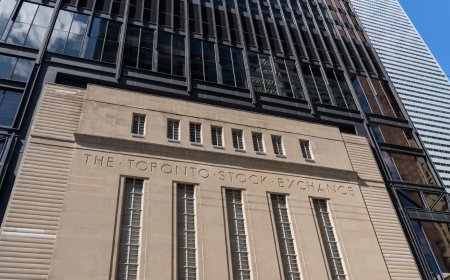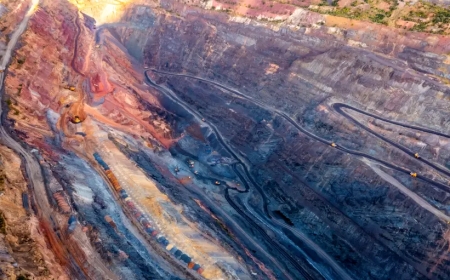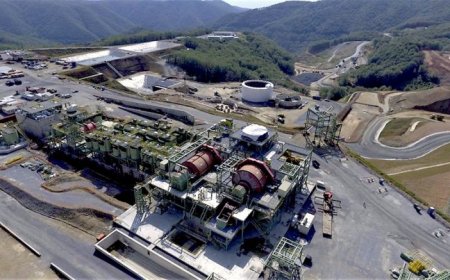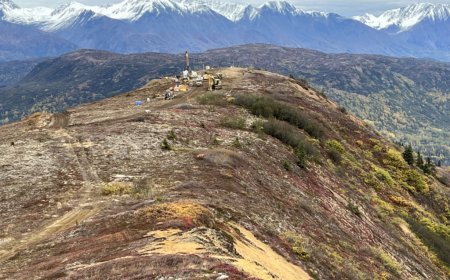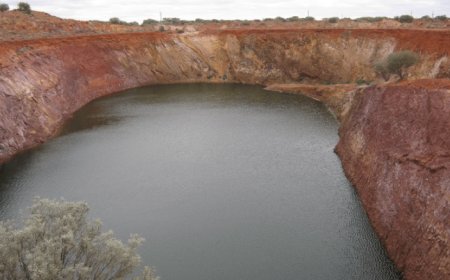Kefi Gold and Copper’s Tulu Kapi build to put Ethiopia on global mining map
After three tumultuous years of civil war in Ethiopia, the founder of Kefi Gold and Copper pinches himself over the East African country’s emergence as a mining investment destination
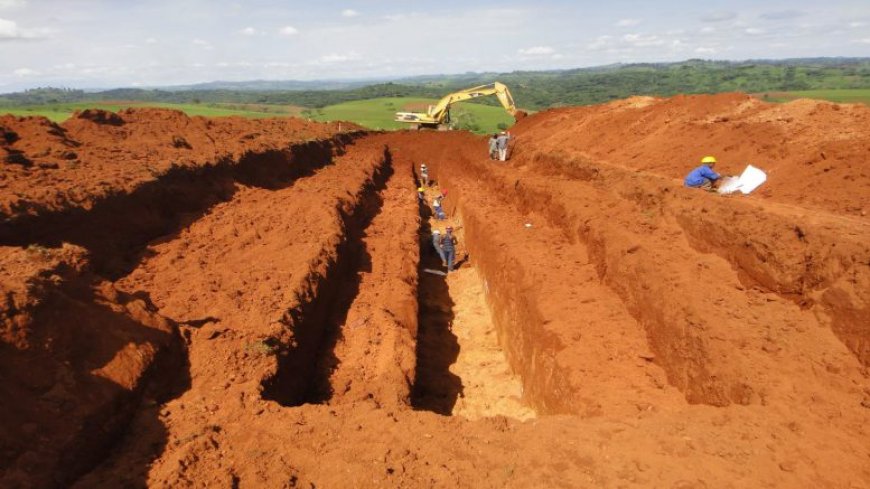

After three tumultuous years of civil war in Ethiopia, the founder of Kefi Gold and Copper (AIM: KEFI) pinches himself over the East African country’s emergence as a mining investment destination.
Harry Anagnostaras-Adams’ brainchild, Kefi, is about to start building the US$320 million Tulu Kapi gold mine in the country’s west, about 360 km from Addis Ababa. With other companies such as the Peter Marrone-led Allied Gold (TSX: AAUC) pulling the trigger on the US$500 million Kurmuk gold mine construction and Sun Peak Metals (TSXV: PEAK) spending on the Shire gold exploration project – the mining sun is rising on Ethiopia’s portion of the Arabian-Nubian Shield.
“This isn’t just a mine opening; it’s a strategic economic milestone for Ethiopia,” Anagnostaras-Adams, who’s also Kefi’s executive chairman, tells The Northern Miner in an interview. “The construction start symbolizes Kefi’s role in the nation’s budding gold sector.”
Anagnostaras-Adams’ leadership has steered the development-ready project through Ethiopia’s political shifts. The project underlines Kefi’s pursuit of new resources against a backdrop of shrinking global reserves and soaring metal demand. Kefi also targets the Nubian Shield’s minerals in Saudi Arabia, demonstrating an industry-wide strategic quest for resource-rich opportunities and reflecting the allure investors see in the emerging Arabian-Nubian Shield.
The mine would have been in production already were it not for the civil unrest which exploded out of long-simmering ethnic tensions and political disputes in the Tigray region bordering Eritrea from 2016, with war gripping the region from November 2020. While the official figures vary, the war killed between 162,000 – 600,000 people and displaced about 2.7 million others.
The path to quelling Ethiopia’s unrest, marked by allegations of severe human rights abuses including forced starvation and civilian casualties, culminated in a peace agreement in November 2022, signalling a tenuous step towards stability after a conflict with a tragic toll on human life.
The government rolled out an increased security presence in the mine’s region just last week to ensure the area’s safety and stability. It was one of the company’s preconditions for giving the project build the green light. Others were government licencing of a foreign bank involved with the project financing and relaxed foreign currency controls.
Ethiopian mining boom
Construction crews are on their way to Tulu Kapi, Anagnostaras-Adams says.
Once the company secures final approvals from lenders, field, legal, plant, and mining teams will work to solidify community resettlement agreements, secure procurement contracts for the plant and mining fleet, and complete deals among all project partners.

Kefi Gold and Copper executive chair Harry Anagnostaras-Adams. Credit: Kefi Gold and Copper
The teams will also obtain approvals from equity-capital providers, including development banks, regional investors and government entities.
Tulu Kapi is tapping US$190 million in secured debt from lenders and US$130 million in equity capital, with US$40 million from the Ethiopian government and US$90 million from Kefi subsidiaries funded by equity-risk notes, plus additional subsidiary-level funding for last-minute adjustments.
Kefi is not the only miner bringing in foreign capital. When Allied Gold listed on the TSX in September, raising US$267 million to develop its Ethiopian project Kurmuk, it was one of the largest Canadian initial public offerings by a junior in more than a decade.
The shield is a mineral-rich formation that stretches under countries of the Middle East and East Africa.
Tulu Kapi was discovered in the 1930s and Kefi acquired it in stages between 2013 and 2014.
At an altitude of 1,600-1,765 metres, the site features greenstone geology. The gold in Tulu Kapi resides in quartz-albite zones consisting of gold, silver, pyrite, sphalerite and galena.The gold should be 93% recoverable in the planned open pit.
Tulu Kapi holds a 2015 reserve base of 15.4 million tonnes grading 2.12 grams gold per tonne for 1.05 million oz. of metal. The indicated and measured resource totals 20.2 million tonnes grading 2.65 grams gold for 1.72 million oz. gold.
The company signed the Tulu Kapi mining agreement with the Ethiopian government in April 2015, securing a 20-year mining licence and a 5% free-carried government interest.
A May 2017 definitive feasibility study, which was updated earlier this year, pegged Tulu Kapi’s production at 140,000 oz. gold per year over eight years starting in 2025 for total output of 1.2 million oz. gold, at an all-in sustaining cost of US$1,200 per ounce.
It has a net present value (5% discount) of US$320 million. The mine is expected to average a net cash flow of US$127 million per year.
Saudi frontier
While Tulu Kapi is expected to be Ethiopia’s largest export generator and solidify the country’s standing in the global gold market, Kefi’s influence also extends to Saudi Arabia. There, it’s advancing two discoveries: the Jibal Qutman gold and the Hawiah gold-copper projects – through the bankable feasibility study stages.
The Jibal Qutman project has undergone a definitive feasibility study, which evaluates the economic and technical feasibility of building a set of adjacent open-pit mines.
This project is expected to recover more than 500,000 oz. gold, a significant increase from the 2013 initial estimate of 169,000 ounces.
In May 2015, Kefi released an updated resource estimate of 28.4 million tonnes at 0.8 gram gold per tonne for 733,045 oz. for Jibal Qutman.
The company continues to explore the property with plans to add to its gold resource.
At Hawiah, which Kefi discovered in 2019, exploration and drilling have established a 29 million tonne resource estimate at 0.89% copper, 0.94% zinc, 0.67 gram gold and 10.1 grams silver per tonne.
Anagnostaras-Adams says the project has the potential to become one of the top base metal projects in Saudi Arabia.
The company plans to progress the feasibility studies for both Saudi Arabian projects next year.
Anagnostaras-Adams views Saudi Arabia as integral to Kefi’s strategy. The country’s sweeping regulatory changes and support from local financiers and regulatory bodies have facilitated rapid progress.
“It’s a completely different atmosphere,” he said. “A few years ago, it was difficult to make progress in Saudi Arabia because of slow and old-fashioned regulation. And we had to suspend and bide our time in Ethiopia. Now, the regulations in Ethiopia and Saudi Arabia were changed,” he said.
“You pinch yourself, to be honest, because, for years, you’re biding your time. And all of a sudden, the Arabian-Nubian Shield is taking off.”
